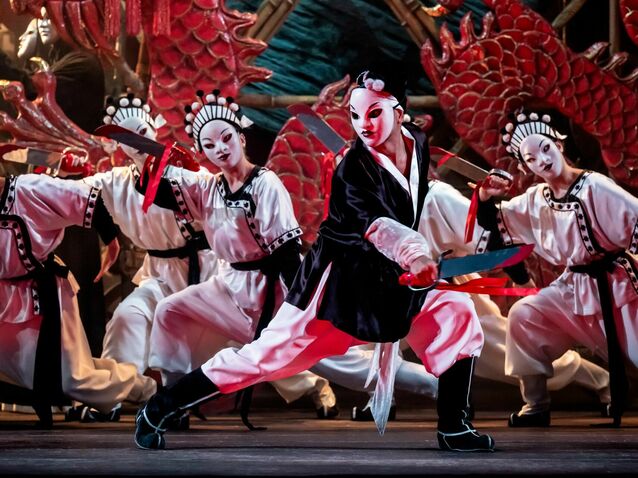 © Camilla Greenwell
© Camilla Greenwell
Schedule
Glossary
show the glossarySearch
Connect
-
Connect to your account
-
Create your account
Community
Chronique à la une
 © Camilla Greenwell
© Camilla Greenwell
Filter
All columns
Bushra El-Turk’s Woman at Point Zero Comes to the Royal Opera ...
Sam SmithBushra El-Turk’s Woman at Point Zero, with a libretto by Stacy Hardy, is based on Nawal El Saadawi’s 1975 novel Point Zero. Having already appeared in France (at the Aix-en-Provence Festival), Belgium and Luxembourg, it now comes to the Royal Opera House to take centre-stage at this year’s Engender Festival, an initiative to transform gender representation in opera and music theatre. The production is by LOD Music Theatre, and it is co-presented as part of the Aldeburgh...
Dido and Aeneas at Liceu: Good Intentions Are Not Enough
Xavier PujolThe raw material for the show, Henry Purcell's opera Dido & Aeneas, was of the highest quality. The ensemble Les Arts Florissants led by its founder, William Christie, a world reference in the field of Baroque music performance, guaranteed a good instrumental and choral performance. The vocal soloists also seemed adequate. The intention was good: presenting Dido & Aeneas in a danced version seemed like a good idea, it has been done with this same title on other occasions...
David et Jonathas by Marc-Antoine Charpentier thrills at the M...
Helmut PitschDavid et Jonathasby Marc-Antoine Charpentier thrills at the Musikfestspiele Potsdam Sanssouci French Baroque at its best The French just know how to do it ... in this case, it is both an opera from 1688 and the production, including costumes and stage design. No wonder ... this is a co-production with the Opéra Royal/Château de Versailles Spectacles with the Musikfestspiele Potsdam Sanssouci and first shown in Versailles in November 2022. David et Jonathasis a...
Strong Musical Credentials see Il trovatore Prevail at the Roy...
Sam SmithGiuseppe Verdi’s Il trovatore of 1853 is based on Antonio García Gutiérrez’s play El trovador. Set in fifteenth century Spain it tells of the noble lady Leonora who is in love with the troubadour Manrico, but is herself loved by the Count di Luna, a nobleman in the service of the Prince of Aragon. The Count’s younger brother Garzia supposedly died in infancy when a gypsy was burnt at the stake for allegedly bewitching him, and the charred body of a...
Lise Davidsen makes her role debut as “Tosca” at the Bergen In...
Helmut PitschLise Davidsen makes her role debut as “Tosca” at the Bergen International Festival Ever since Lise Davidsen hit upon the world of opera in 2015, when she won not one but three major competitions - Operalia, Hans Gabor Belvedere and in her home country, the Queen Sonja Competition – she has been a singer to watch. With her youthful dramatic full-bodied soprano, she has since enchanted audiences on the world's great stages in roles such as Sieglinde in...
Gran Teatre del Liceu: And Now Who Will Redeem Us From Parsifal?
Xavier PujolThe chorus sings its last phrase, the mysterious and enigmatic "Erlösung dem Erlöser" (Redemption to the redeemer) while greeting a Parsifal dressed more or less like a fascist dictator. Kundry, the Jewess, does not expire placidly after being baptized but, alarmed by what she sees and, above all, by what she foresees, she packs her bags and goes into exile, the curtain falls. The question is obvious: And now who will redeem us from Parsifal? Thus ends the Parsifal...
